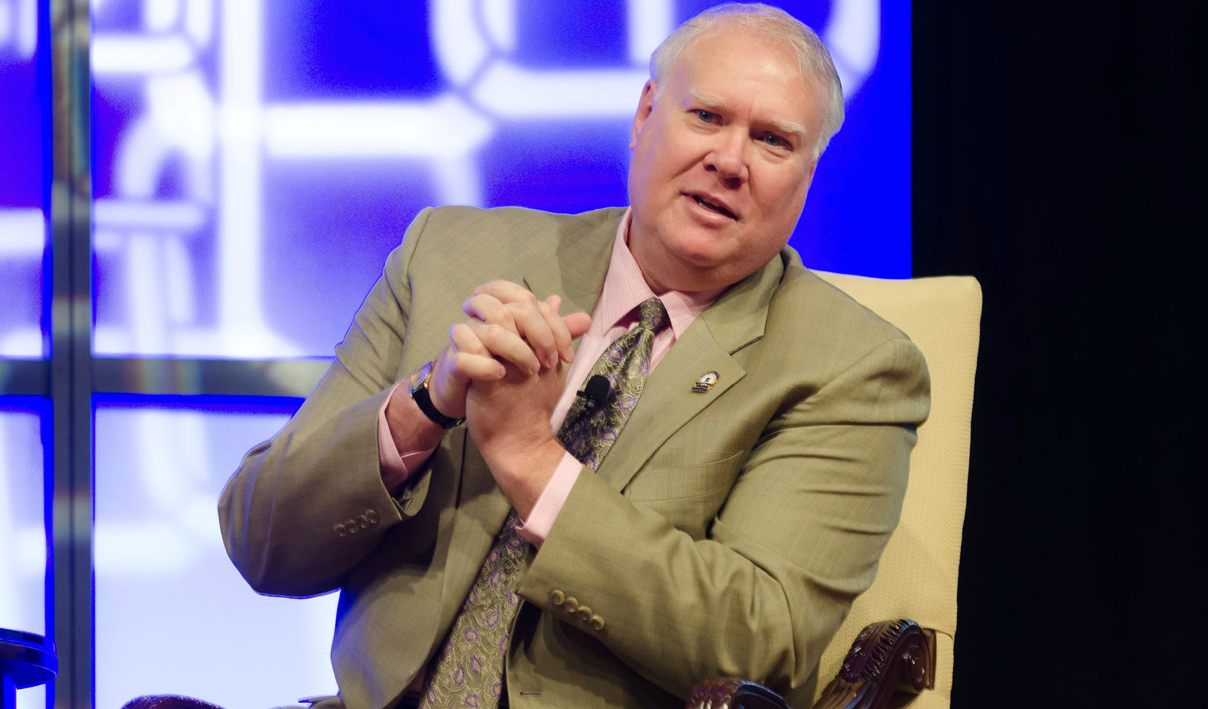 Pam Kabati, VP and Editorial Director at NAR, Twittered that Realtor Magazine Online has a update on the HUD Bridge Loan Credit. Here is what Realtor Magazine Online, has to say:
Pam Kabati, VP and Editorial Director at NAR, Twittered that Realtor Magazine Online has a update on the HUD Bridge Loan Credit. Here is what Realtor Magazine Online, has to say:
Buyer Tax Credit Loan Guidance Coming Soon
Detailed guidance on the federal government’s plan to provide short-term loans to borrowers using the First-Time Homebuyer Tax Credit is expected to be out shortly, but a spokesperson from the U.S. Department of Housing and Urban Development, which is writing the guidance, couldn’t give a firm release date.HUD policy staff are "still working out the details on it," HUD spokesperson Lamar Wooley told REALTOR® Magazine today. "So we expect it to be published shortly."
The short-term loan program, which would effectively monetize the first-time homebuyer tax credit by permitting eligible lenders to make bridge loans collateralized by the borrower’s expected tax credit, was announced by HUD Secretary Shaun Donovan at the Real Estate Summit NAR hosted on the opening day of its 2009 Midyear Legislative Meetings in Washington last week.
At the summit, Donovan said the loans would enable FHA consumers to access the tax credit funds when they close on their home loans so that the cash could be used as a downpayment.
"FHA will permit trusted FHA-approved lenders and HUD-approved nonprofits, as well as state and local governmental entities to ‘monetize’ the tax credit through short-term bridge loans," Donovan said. "We think the policy is a real win for everyone, ensuring that borrowers can tap into the numerous organizations that are already part of the FHA network to receive this additional benefit. FHA will be publishing the details shortly."
It’s unclear at this point what shape the guidance will take and whether authorization for the loans will be available across the board or only in states in which the state housing finance agency already has a tax credit bridge-loan program in place.
Advertisement. Scroll to continue reading.There are 10 states today that have such a loan program, according to the National Council of State Housing Agencies: Colorado, Delaware, Idaho, Kentucky, Missouri, New Jersey, New Mexico, Ohio, Pennsylvania, and Tennessee.
You can access details of these loan programs on the NCSHA’s Web site, "First-Time Homebuyer Tax Credit Loan Programs."
When it’s released, the guidance is expected to be issued as a HUD Mortgagee Letter and will likely discuss which federal, state, and local governmental agencies and nonprofit organizations will be permitted to make the loans, and whether lenders such as FHA-approved mortgagees will be permitted to make the loans.The guidance could also cover how loan amounts will be limited, what happens if repayment problems occur, and what repayment terms would look like.
REALTOR® Magazine will be checking with HUD regularly on the status of the guidance and will report its availability as soon as it’s issued.
—By Robert Freedman for REALTOR® Magazine
I guess my gut reaction is that I’ll believe it when I see it. I rarely believe anything that has the air of politics until it’s upon us.
NAR took a beating after the on again off again HUD information releases contradiction. To me it was another good indication that quick information is not nearly as valuable as vetted information. Many Realtors blogged and Twittered about this issue and then were upset that HUD said it wasn’t immediately true. I think it would have been nice had NAR released a quick “We’re looking into it” and maybe took down the information on Realtor.org; but non-the-less it drives home the point that we should all research our sources better, before retransmitting.
Also a hat/tip to Pam for using Twitter to get this word out. I just wish the Realtor Leaders would use current tools to engage their membership. Maybe we would have some very different outcomes…
Matthew Rathbun is a Virginia Licensed Broker and Director of Professional Development for Coldwell Banker Elite, in Fredericksburg Virginia. He has opened and managed real estate firms, as well as coached and mentored agents and Brokers. As a Residential REALTOR®, Matthew was a high volume agent and past REALTOR® Rookie of the Year & Virginia Association Instructor of the Year. You can follow him on Twitter as "MattRathbun" and on Facebook. Matthew's blog is TheAgentTrainer.com.









































Matt Carter
May 19, 2009 at 12:55 pm
There has been a lot of noise in the blogosphere that HUD might back down on Housing Secretary Shaun Donovan’s promise that the FHA will allow tax credit bridge loans. But HUD has remained adamant all along that FHA will be issuing instructions to lenders (a “mortgagee letter”) outlining the rules.
HUD seems to have created a lot of confusion by issuing a mortgagee letter last week and then withdrawing it. A HUD spokesman told me today that the letter was a draft that was posted “inadvertently” and that the final version is coming out “shortly.”
But there has been no “on again off again HUD information releases contradiction.” In his May 12 announcement, Donovan said the guidelines would be published shortly. Every time I’ve asked them since, HUD continues to say the final guidelines will be published shortly.
Rather vague, but HUD has never said it was backing down from Donovan’s promise — people just assumed that when the mortgagee letter disappeared without explanation.
The big question seems to be whether the final guidelines will be more limited than those outlined by Donovan and spelled out in the draft mortgagee letter.
Jason Lopez
May 19, 2009 at 4:21 pm
“I rarely believe anything that has the air of politics until it’s upon us.” Really? Tell that to the banks that got TARP funds and now want to repay them but can’t. Drastic times require drastic action. Not saying I agree with all of it, but these types of programs are out there and several states already have similar types of programs in place, so why not think it will happen?
Nashville Grant
March 10, 2010 at 12:58 am
Jason is correct. Politians are out there trying to be heroes with these halfcocked programs meant to return us to prosperity when in fact, they may be leading us the opposite direction.
Matt Stigliano
May 19, 2009 at 4:26 pm
Matthew – Pam also stopped by my ActiveRain post about this and commented. It was nice to see the update, but I too questioned why NAR couldn’t (and wouldn’t) just send an email after they got this whole thing started. I never thought HUD just took the program away, I thought they just announced prematurely (and whether or not Secretary Donovan’s intention was to announce or discuss the possibility, the fact remains that they released the mortgagee letter).
I know I shared the link with you before, but if anyone wants to read more ranting and raving about the issue:
https://budurl.com/NARGoat
Matthew Rathbun
May 19, 2009 at 4:59 pm
Matt / Jason,
Thanks for commenting. I think that hesitation is not that something will or wont happen, but will it really be beneficial overall? I just won’t know until I see it in practice.
The initial $7,000 “credit”, that was really a federal loan is a recent example of why I’m hesitate to believe in it’s benefits until I actually see it in action and hear from those smarter than I, about its virtues.
Paula Henry
May 19, 2009 at 9:38 pm
The news today is the motion has been rescinded and they will not be using the $8000 tax credit as downpayment. Critics say it’s too much like DPA’s and credits should not be used as debt.
https://www.azcentral.com/arizonarepublic/business/articles/2009/05/18/20090518biz-downpayment0519.html
Waiting for the zero down FHA next……….
Matt Carter
May 20, 2009 at 10:47 am
Paula, the story was wrong, and the paper has published a follow up story on HUD’s intention to follow through and issue a mortgagee letter.
https://www.azcentral.com/arizonarepublic/business/articles/2009/05/20/20090520biz-downpayment0520.html
BTW, there was legislation in play that would have lowered FHA down payment requirements to zero, but the House and Senate could not agree on other aspects of so-called “FHA modernization,” including risk-based premium pricing. HUD was behind the idea — citing it as a reason they could eliminate seller-funded downpayment assistance.
By the time the FHA modernization bill got passed last year, lawmaker’s attitudes about zero down had changed and the minimum was instead INCREASED from 3 percent to 3.5 percent.
Anytime you need Congress to do something (like the tax credit), I think it’s safe to say you’d better not assume it’s going to happen until the legislation is on its way to the President’s desk.
In this case, HUD seems to have the authority to dictate what the policy is going to be, so you can bet they are trying to word something that fulfills the promises made by the Housing Secretary (although there is some speculation they might need legislation to do everything Donovan promised).
Ditech Mortgage
May 20, 2009 at 11:38 am
Evidently, the FHA bridge loan program cannot be used until certain changes are made, such as:
1. Agencies and lenders must be approved who have funds for the down payment.
2. A Change to the HUD guidelines on the time frame that is allowable for a bridge loan.
3. A change to the IRS guidelines allowing the refund to be assigned to an agency or lender.
Matt Stigliano
May 20, 2009 at 2:09 pm
Matthew – I think it just gives one more reason for buyers to be hesitant. Will they, won’t they, how will they…? Instead of getting on with life, people are getting stuck in this perpetual “waiting for the news on the market.” It’s not helping move houses and clear up inventory, that’s for sure. If they did pass it, I wonder how many people would sit back and say, “I’m not going to buy yet, I think I’ll wait until they improve this deal (much like did with the $7,500 vs $8,000).” It’s become like technology, most people don’t want to buy version 1.0, because they know 2.0 will be way cooler – and most likely cheaper (iPhone?).
Paula Henry
May 20, 2009 at 8:44 pm
Matt – Thanks for the follow up – it sounds promising, but everytime a “new” promise comes along, it seems to confuse the buyer more.
Today, I talked to someone who is only interested in a bank owned for the $2500. credit being offered locally if you buy a bank owned home. Often it’s not the best deal.
I think first time homebuyers will ultimately be better off taking the tax credit.
Dwight Shreve
May 29, 2009 at 4:59 pm
Funny how they got rid of SFDPA because the buyer didn’t have any “skin” in the transaction, yet now they want to find a way to monetize the tax credit to be used for a downpayment. SFDPA cost taxpayers $0, yet they got rid of it only to try and find a way to do the same thing that costs taxpayer dollars. I picture Congress as a bunch of chimps in suits eating bananas.
Lucky for us, we have put together a program that monetizes the tax credit to be used as a downpayment. We started and got this program approved before any of this HUD non-sense.
It meets current FHA guidelines, a handful of lenders have already approved it and we are moving forward with it.
Interested? Visit my website http://www.fthbtaxcreditsolutions.com to learn more about it!
Matt Carter
June 1, 2009 at 11:36 am
The uncertainty about how this would actually work after it was announced by the Secretary of Housing on May 12 has been resolved with the the issuance of the FHA letter to mortgagees on May 29 spelling out the rules.
The bottom line is that the tax credit can be “monetized” and applied to the down payment or to cover closing costs on an FHA-backed loan — but the money can’t be used to meet the FHA’s 3.5 percent minimum down-payment requirement.
See Mortgagee Letter 2009-15.
However, there are state housing finance agencies that offer soft seconds — including some programs that take the borrower’s anticipated tax credit into account as part of the underwriting process — that CAN be applied to FHA’s minimum down payment requirements.
In other words, you can’t use money obtained solely on your expectation that you will be getting this tax credit to FHA’s 3.5 percent minimum down payment requirement. But you can use it to make an additional down payment and for closing costs.
And your eligibility for the tax credit may help you obtain a soft second loan from a state HFA that you can use to meet FHA’s 3.4 percent down payment requirement.
Here are some states that offer first-time homebuyer tax credit loan programs.
https://www.ncsha.org/section.cfm/3/34/2920